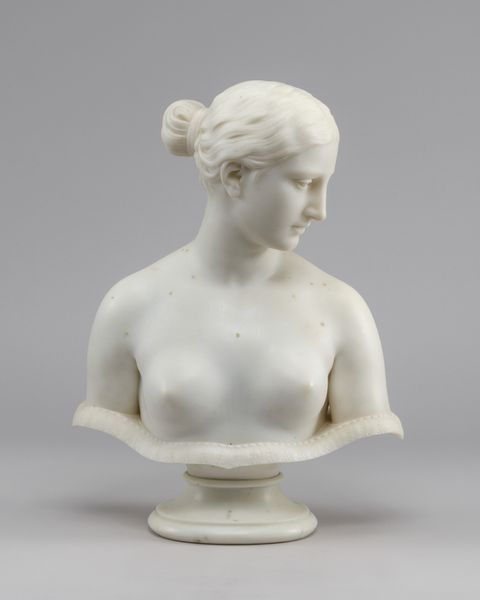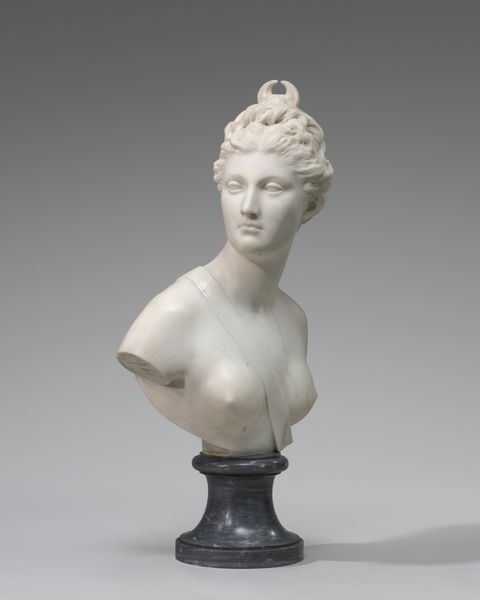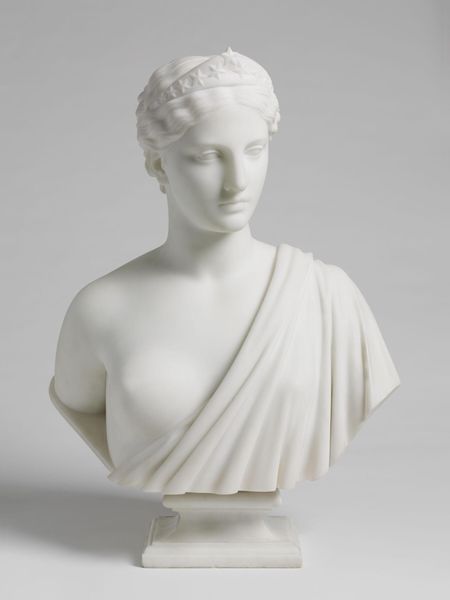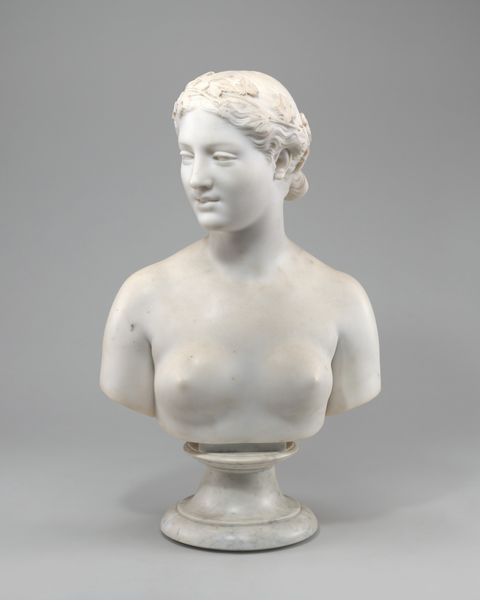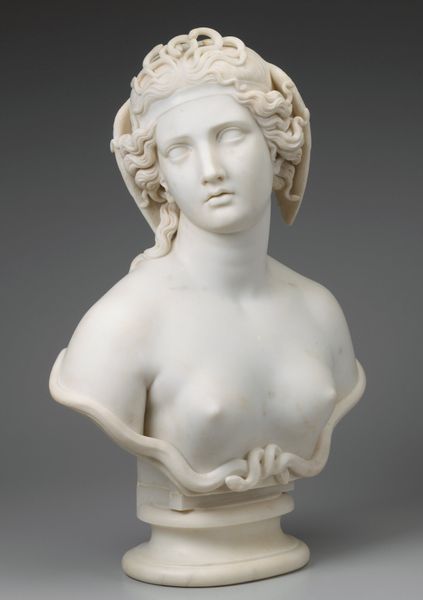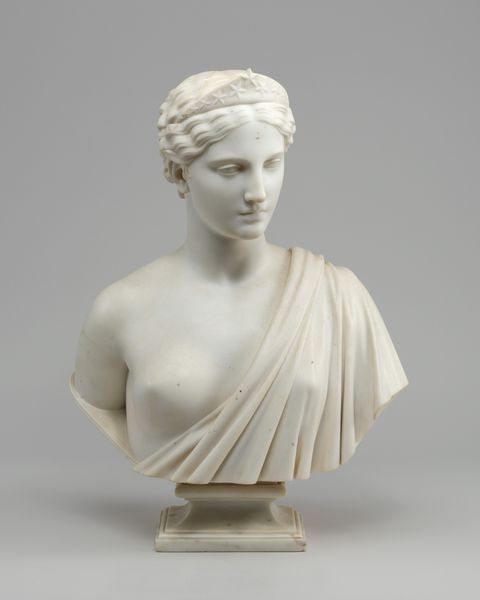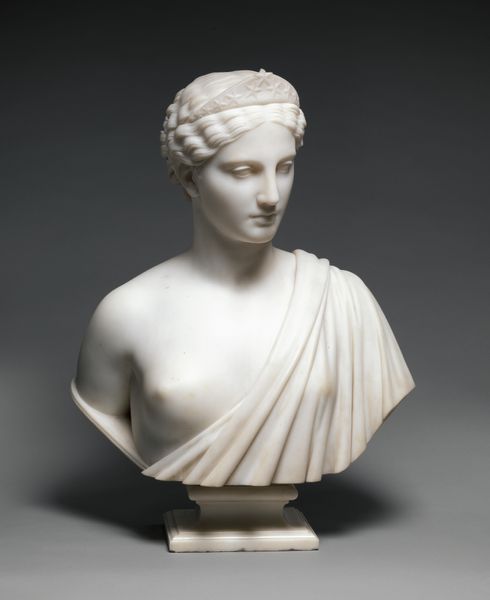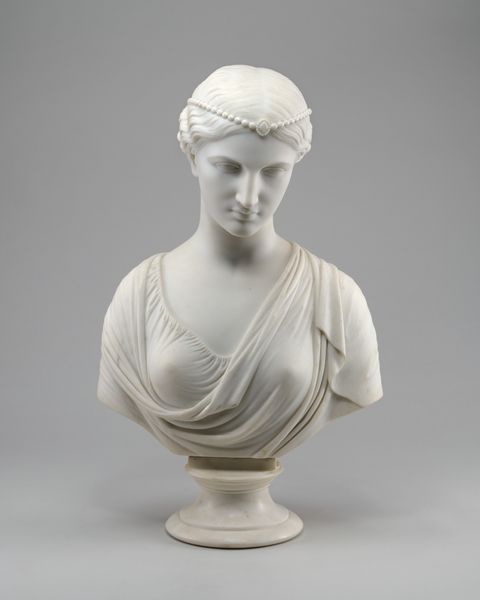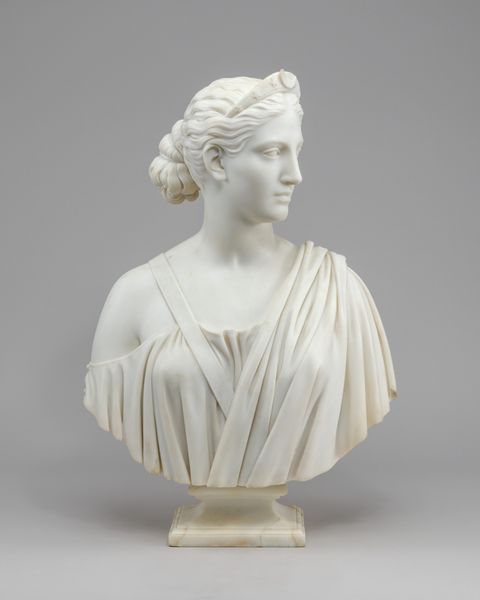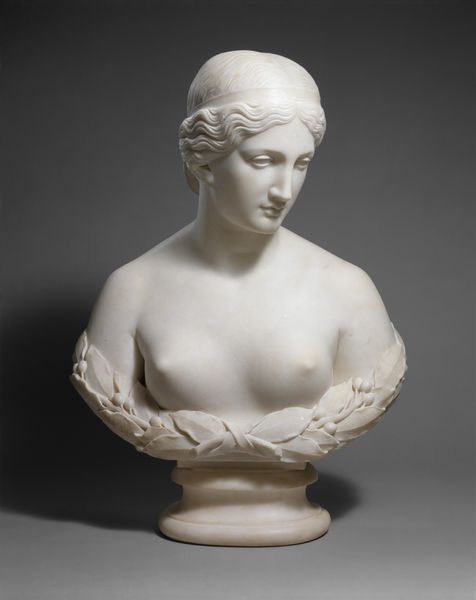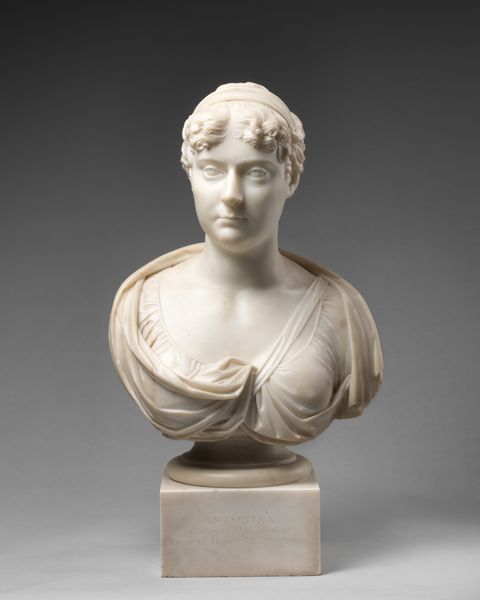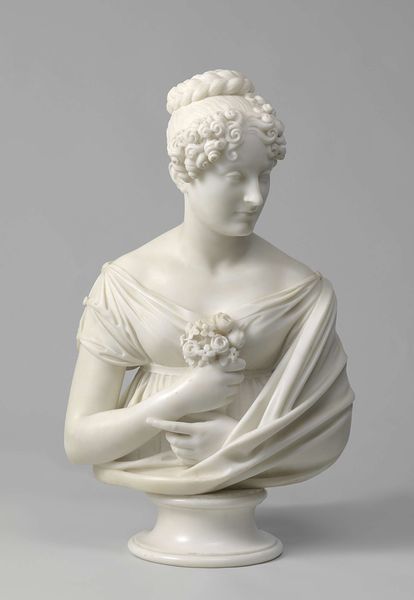
sculpture, marble
#
portrait
#
neoclassicism
#
classical-realism
#
figuration
#
sculpture
#
academic-art
#
marble
#
nude
Dimensions: overall: 54.93 × 46.99 × 25.08 cm (21 5/8 × 18 1/2 × 9 7/8 in.)
Copyright: National Gallery of Art: CC0 1.0
Editor: Here we have Hiram Powers's unfinished marble bust, simply titled "The Greek Slave," and its date is unknown. There's such a delicacy to the carving, it looks so smooth! But her downward gaze makes me wonder, what do you make of the story behind this incomplete work? Curator: Well, the "Greek Slave" became incredibly popular in the mid-19th century. At first glance, its neo-classical beauty offers a certain aesthetic pleasure, right? But we have to remember the piece depicts a nude woman, presented for the viewer’s consumption. Can we see parallels in its context with today’s issues of sexualizing women and the male gaze? Editor: It does feel like she's posed, and it does speak to broader conversations. Curator: Absolutely. Works like this can reinforce harmful power dynamics that are based on race and gender. When viewers admired her “innocence” and “vulnerability”, they ignored their own roles as possible participants in such oppression. Editor: The “unfinished” aspect gives it another layer. What could Powers have intended by leaving it in this state? Curator: It’s interesting, isn’t it? Did the unfinished state act as an artistic loophole of sorts for its time, deflecting from those dynamics of objectification of enslaved people or maybe of women in general by imbuing an incomplete humanity? How did audiences react to what could have seemed, and might still seem, incomplete? And might *that* incomplete form reveal its time period's perspective to us today? Editor: It’s thought-provoking to consider how interpretations evolve over time, with our evolving understandings. Curator: Exactly. It's a reminder that artworks don't exist in a vacuum and have complicated social, historical, and sometimes unpleasant narratives. Analyzing these complexities moves us toward richer, critical discussions about art's place in shaping—or challenging—societal norms. Editor: Thank you! Now, I will think of her and how different people are receiving this depending on context, background, and time.
Comments
No comments
Be the first to comment and join the conversation on the ultimate creative platform.
